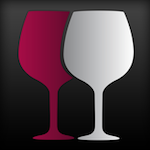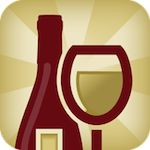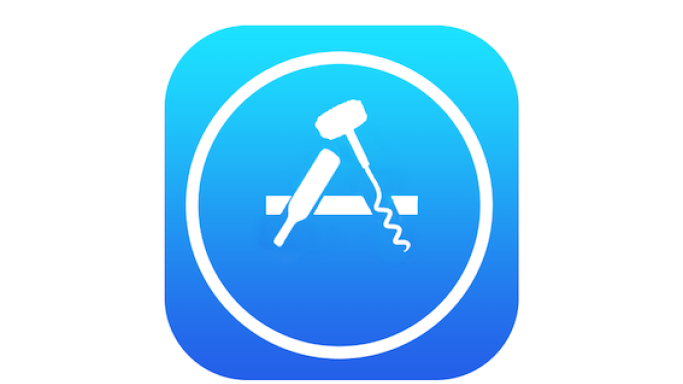16 January 2020 Coming up for four years after this article was published, little has changed in the world of label-scanning apps. Vivino and Delectable remain the main players, with Vivino still the most popular and most useful overall. For full reviews, see the complete article below.
18 April 2016 When the first wine label scanning apps appeared around three years ago, it seemed like pocket-sized alchemy. Now, anybody could identify a wine from a photograph taken using their smartphone. It was revelatory.
Today, such is the fickle nature of progress, that this technology seems so routine as to be almost mundane. Yet these apps are still miraculous pieces of engineering, and indeed they continue to improve every year – hence this new round-up of the main contenders, following on from last year's review.
This year, I reviewed seven label-scanning apps: Vivino, Delectable, Wine-Searcher, CellarTracker, Hello Vino, Drync and Snooth. I used the same five identical label shots (below) with each one. The wines were deliberately selected to include a distinctive, well-known label such as Penfolds Bin 8, a much more obscure wine in the shape of Bouvet Rubis (a sparkling red from the Loire), a tricky pair of Côtes d'Auvergne bottles which have identical labels yet are different coloured wines (rosé and red) and a New Zealand Sauvignon Blanc with lots of small writing on the label. I scored each app for time, accuracy, editability and added features.

So, how did they fare? Considering they all centre around the same basic proposition, there is in fact a huge difference in quality. First, let's look at the four which underperformed.
THE UNDERPERFORMERS

Snooth
Cost: Free, but $4.99 to use label scanner
Score: 0/10
This hasn't worked properly since I first reviewed it in 2014, yet it has the temerity to charge for the privilege. Avoid at all costs.

Drync
Cost: free
Score: 2/10
The Spy Valley and Penfolds were partially correctly identified, but labels which it couldn't identify at all needed to be submitted for manual verification. The response took four to five hours, which is a big problem for the smartphone expectation of instantaneous solutions.

Hello Vino
Cost: free, but $0.99 for five label scans or $4.99 for unlimited label scans
Score: 4/10
The main point of this app is to give you recommendations of what to buy, but it does include a label-recognition feature. Unfortunately, its reliability is very limited and when a label is not recognised, it gives the user no options to add a new wine. Compared with the best apps, this is not recommended.

Cellartracker
Cost: free
Score: 6/10
Much beloved of wine collectors for its online wine database system, CellarTracker uses Vivino (see below) to identify its labels. It's a slightly slower experience than using Vivino natively, but the accuracy of identification is good. However, editability was let down by an awkward interface that was either bug-ridden or illogical, or possibly both. I expect this would be easy enough to get used to, but the usability factor was definitely inferior to the best examples of label-scanning apps. Even so, anyone who already uses CellarTracker online may well find this the most useful option.
THE MAIN CONTENDERS

Wine-Searcher
Cost: free
Score: 7/10
Wine-Searcher has cornered the market in wine price data and is an unrivalled resource in that regard. That gives it a distinct advantage when searching for wines, as it can offer extensive availability and price information. However, the label recognition feature does not perform brilliantly. Although it is very speedy, there were no 100% correct identifications, and in some cases the matchings suggested were wildly inaccurate. It was fairly easy to correct these, however, through a text search through their main database. If price information is your primary need, this may be the most appropriate app for your needs.

Delectable
Cost: free
Score: 8/10
Since reviewing Delectable last year, a major upgrade has seen the addition of a shop which allows you to buy wine through your phone and have it delivered. This is the logical extension for label-scanning apps – especially those which are free, and therefore have to generate revenue by other means. Delectable's answer is a completely separate app called Banquet, which currently operates only in the US. As for the original app, it still looks and feels great to use, but has some shortcomings regarding accuracy.
None of the five wines I scanned was identified 100% correctly with the most common mismatch being wine colour and grape variety. In most cases, the correct option was then offered in a list of other potential matches, but this was not an ideal system. The list was often long and in apparently random order, so it was not easy to find the correct wine. Furthermore, their database offered multiple entries for the same wine in some cases. This is the scourge of all wine data systems, and can be sympathised with, but it leaves the user with an impression of messiness – especially when compared with its closest rival.

Vivino
Cost: free, or premium for £3.99 per month.
Score: 10/10
Once again, Vivino reigns supreme. Their label-recognition algorithm is by far the best on the market. It was the only app to identify two out of the five labels with 100% accuracy (including vintage, which is often the hardest aspect) and offered very easy editability for the other three, which required minimal corrections. This mostly involved selecting a wine from a list of close alternatives. It clearly has the largest and cleanest set of data regarding wine labels, and has probably garnered the critical mass to retain its top position almost indefinitely. It is certainly the best choice for anyone who wants the most useful results when scanning a wine label, and it also has a host of handy added features.
Like Delectable, this now includes a shopping option, which offers an average price as well as a 'buy' link. These connect to an external retailer's website, using data that I'd imagine is provided by Wine-Searcher. In terms of convenience, this is about as good as it gets (though see our Members' forum to read about a customer's real experience). All of the most vital features are available for free, but the premium upgrade adds personal recommendations, expert ratings and cellar management. This would be useful for heavy users but isn't necessary otherwise. Vivino is an impressive, well-designed and very useful app and remains the gold standard among its peers.
A FEW OTHER WINE APPS
Some other apps from the many thousands available that might be worth your attention are as follows:
- Enosocial, an Italian app primarily designed to tell you about nearby wineries
- Wherewhenwine (not yet released) this new app promises to show you tasting events around the world
- Plonk is a user-friendly app to provide basic guidance on how to choose wine, created by one of the UK's largest importers, Bibendum
- Winery Passport calls itself 'the wine industry's most downloaded mobile app for winery tourism' and is designed to help you find tasting rooms across the US and Canada
- Tipple offers a series of prompts to help you construct a tasting note, and keeps a record of all wines tasted. It's a slightly laborious process, but could be useful for newcomers to wine
- Raisanable was a much-heralded app that revealed the mark-up on restaurant wine lists, which was understandably loathed by restaurateurs. Intriguingly, it seems to have disappeared from the app store.

